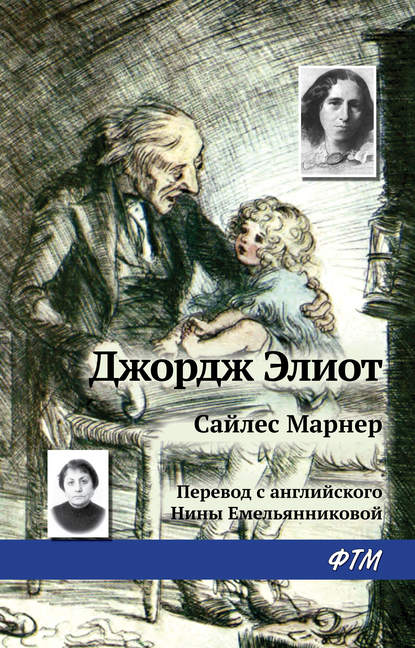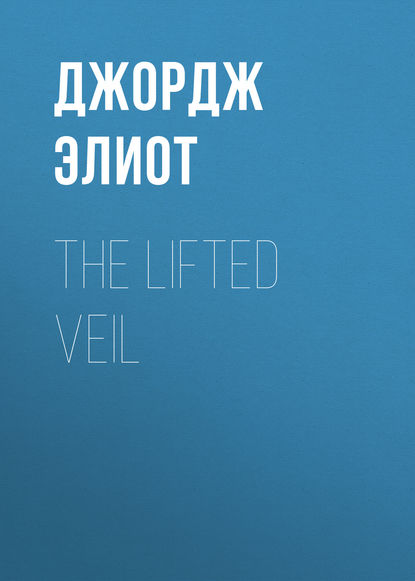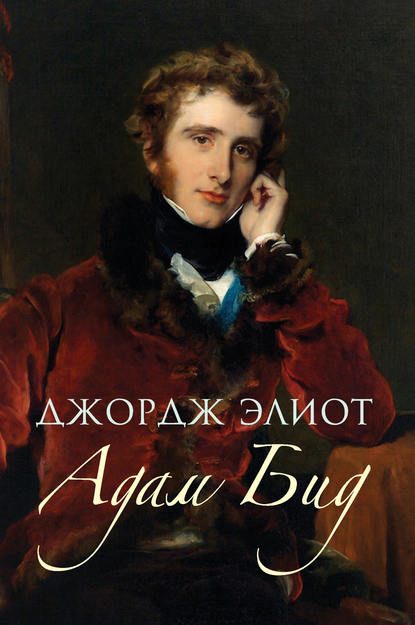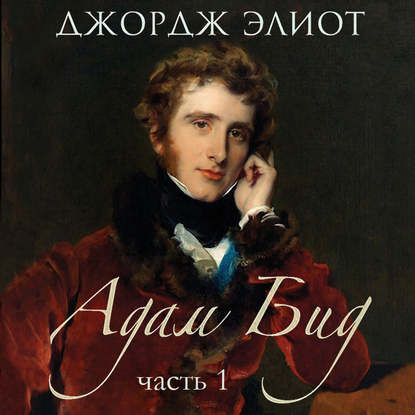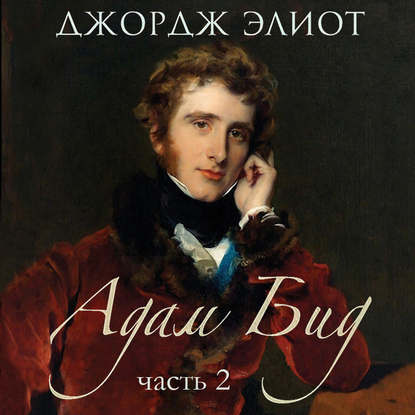
Полная версия
The Essays of "George Eliot"
Patriotic gallantry may perhaps contend that English women could, if they had liked, have written as well as their neighbors; but we will leave the consideration of that question to the reviewers of the literature that might have been. In the literature that actually is, we must turn to France for the highest examples of womanly achievement in almost every department. We confess ourselves unacquainted with the productions of those awful women of Italy, who held professorial chairs, and were great in civil and canon law; we have made no researches into the catacombs of female literature, but we think we may safely conclude that they would yield no rivals to that which is still unburied; and here, we suppose, the question of pre-eminence can only lie between England and France. And to this day, Madame de Sévigné remains the single instance of a woman who is supreme in a class of literature which has engaged the ambition of men; Madame Dacier still reigns the queen of blue stockings, though women have long studied Greek without shame; 2 Madame de Staël’s name still rises first to the lips when we are asked to mention a woman of great intellectual power; Madame Roland is still the unrivalled type of the sagacious and sternly heroic, yet lovable woman; George Sand is the unapproached artist who, to Jean Jacques’ eloquence and deep sense of external nature, unites the clear delineation of character and the tragic depth of passion. These great names, which mark different epochs, soar like tall pines amidst a forest of less conspicuous, but not less fascinating, female writers; and beneath these, again, are spread, like a thicket of hawthorns, eglantines, and honey-suckles, the women who are known rather by what they stimulated men to write, than by what they wrote themselves – the women whose tact, wit, and personal radiance created the atmosphere of the Salon, where literature, philosophy, and science, emancipated from the trammels of pedantry and technicality, entered on a brighter stage of existence.
What were the causes of this earlier development and more abundant manifestation of womanly intellect in France? The primary one, perhaps, lies in the physiological characteristics of the Gallic race – the small brain and vivacious temperament which permit the fragile system of woman to sustain the superlative activity requisite for intellectual creativeness; while, on the other hand, the larger brain and slower temperament of the English and Germans are, in the womanly organization, generally dreamy and passive. The type of humanity in the latter may be grander, but it requires a larger sum of conditions to produce a perfect specimen. Throughout the animal world, the higher the organization, the more frequent is the departure from the normal form; we do not often see imperfectly developed or ill-made insects, but we rarely see a perfectly developed, well-made man. And thus the physique of a woman may suffice as the substratum for a superior Gallic mind, but is too thin a soil for a superior Teutonic one. Our theory is borne out by the fact that among our own country-women those who distinguish themselves by literary production more frequently approach the Gallic than the Teutonic type; they are intense and rapid rather than comprehensive. The woman of large capacity can seldom rise beyond the absorption of ideas; her physical conditions refuse to support the energy required for spontaneous activity; the voltaic-pile is not strong enough to produce crystallizations; phantasms of great ideas float through her mind, but she has not the spell which will arrest them, and give them fixity. This, more than unfavorable external circumstances, is, we think, the reason why woman has not yet contributed any new form to art, any discovery in science, any deep-searching inquiry in philosophy. The necessary physiological conditions are not present in her. That under more favorable circumstances in the future, these conditions may prove compatible with the feminine organization, it would be rash to deny. For the present, we are only concerned with our theory so far as it presents a physiological basis for the intellectual effectiveness of French women.
A secondary cause was probably the laxity of opinion and practice with regard to the marriage-tie. Heaven forbid that we should enter on a defence of French morals, most of all in relation to marriage! But it is undeniable that unions formed in the maturity of thought and feeling, and grounded only on inherent fitness and mutual attraction, tended to bring women into more intelligent sympathy with men, and to heighten and complicate their share in the political drama. The quiescence and security of the conjugal relation are doubtless favorable to the manifestation of the highest qualities by persons who have already attained a high standard of culture, but rarely foster a passion sufficient to rouse all the faculties to aid in winning or retaining its beloved object – to convert indolence into activity, indifference into ardent partisanship, dulness into perspicuity. Gallantry and intrigue are sorry enough things in themselves, but they certainly serve better to arouse the dormant faculties of woman than embroidery and domestic drudgery, especially when, as in the high society of France in the seventeenth century, they are refined by the influence of Spanish chivalry, and controlled by the spirit of Italian causticity. The dreamy and fantastic girl was awakened to reality by the experience of wifehood and maternity, and became capable of loving, not a mere phantom of her own imagination, but a living man, struggling with the hatreds and rivalries of the political arena; she espoused his quarrels, she made herself, her fortune, and her influence, the stepping-stones of his ambition; and the languid beauty, who had formerly seemed ready to “die of a rose,” was seen to become the heroine of an insurrection. The vivid interest in affairs which was thus excited in woman must obviously have tended to quicken her intellect, and give it a practical application; and the very sorrows – the heart-pangs and regrets which are inseparable from a life of passion – deepened her nature by the questioning of self and destiny which they occasioned, and by the energy demanded to surmount them and live on. No wise person, we imagine, wishes to restore the social condition of France in the seventeenth century, or considers the ideal programme of woman’s life to be a marriage de convenance at fifteen, a career of gallantry from twenty to eight-and-thirty, and penitence and piety for the rest of her days. Nevertheless, that social condition has its good results, as much as the madly superstitious Crusades had theirs.
But the most indisputable source of feminine culture and development in France was the influence of the salons, which, as all the world knows, were réunions of both sexes, where conversation ran along the whole gamut of subjects, from the frothiest vers de société to the philosophy of Descartes. Richelieu had set the fashion of uniting a taste for letters with the habits of polite society and the pursuits of ambition; and in the first quarter of the seventeenth century there were already several hôtels in Paris, varying in social position from the closest proximity of the Court to the debatable ground of the aristocracy and the bourgeoisie, which served as a rendezvous for different circles of people, bent on entertaining themselves either by showing talent or admiring it. The most celebrated of these rendezvous was the Hôtel de Rambouillet, which was at the culmination of its glory in 1630, and did not become quite extinct until 1648, when the troubles of the Fronde commencing, its habitués were dispersed or absorbed by political interests. The presiding genius of this salon, the Marquise de Rambouillet, was the very model of the woman who can act as anamalgam to the most incongruous elements; beautiful, but not preoccupied by coquetry, or passion; an enthusiastic admirer of talent, but with no pretensions to talent on her own part; exquisitely refined in language and manners, but warm and generous withal; not given to entertain her guests with her own compositions, or to paralyze them by her universal knowledge. She had once meant to learn Latin, but had been prevented by an illness; perhaps she was all the better acquainted with Italian and Spanish productions, which, in default of a national literature, were then the intellectual pabulum of all cultivated persons in France who are unable to read the classics. In her mild, agreeable presence was accomplished that blending of the high-toned chivalry of Spain with the caustic wit and refined irony of Italy, which issued in the creation of a new standard of taste – the combination of the utmost exaltation in sentiment with the utmost simplicity of language. Women are peculiarly fitted to further such a combination – first, from their greater tendency to mingle affection and imagination with passion, and thus subtilize it into sentiment; and next, from that dread of what overtaxes their intellectual energies, either by difficulty, or monotony, which gives them an instinctive fondness for lightness of treatment and airiness of expression, thus making them cut short all prolixity and reject all heaviness. When these womanly characteristics were brought into conversational contact with the materials furnished by such minds as those of Richelieu, Corneille, the Great Condé, Balzac, and Bossuet, it is no wonder that the result was something piquant and charming. Those famous habitués of the Hôtel de Rambouillet did not, apparently, first lay themselves out to entertain the ladies with grimacing “small-talk,” and then take each other by the sword-knot to discuss matters of real interest in a corner; they rather sought to present their best ideas in the guise most acceptable to intelligent and accomplished women. And the conversation was not of literature only: war, politics, religion, the lightest details of daily news – everything was admissible, if only it were treated with refinement and intelligence. The Hôtel de Rambouillet was no mere literary réunion; it included hommes d’affaires and soldiers as well as authors, and in such a circle women would not become bas bleus or dreamy moralizers, ignorant of the world and of human nature, but intelligent observers of character and events. It is easy to understand, however, that with the herd of imitators who, in Paris and the provinces, aped the style of this famous salon, simplicity degenerated into affectation, and nobility of sentiment was replaced by an inflated effort to outstrip nature, so that the genre précieux drew down the satire, which reached its climax in the Précieuses Ridicules and Les Femmes Savantes, the former of which appeared in 1660, and the latter in 1673. But Madelon and Caltros are the lineal descendants of Mademoiselle Scudery and her satellites, quite as much as of the Hôtel de Rambouillet. The society which assembled every Saturday in her salon was exclusively literary, and although occasionally visited by a few persons of high birth, bourgeois in its tone, and enamored of madrigals, sonnets, stanzas, and bouts rimés. The affectation that decks trivial things in fine language belongs essentially to a class which sees another above it, and is uneasy in the sense of its inferiority; and this affectation is precisely the opposite of the original genre précieux.
Another centre from which feminine influence radiated into the national literature was the Palais du Luxembourg, where Mademoiselle d’Orleans, in disgrace at court on account of her share in the Fronde, held a little court of her own, and for want of anything else to employ her active spirit busied herself with literature. One fine morning it occurred to this princess to ask all the persons who frequented her court, among whom were Madame de Sévigné, Madame de la Fayette, and La Rochefoucauld, to write their own portraits, and she at once set the example. It was understood that defects and virtues were to be spoken of with like candor. The idea was carried out; those who were not clever or bold enough to write for themselves employing the pen of a friend.
“Such,” says M. Cousin, “was the pastime of Mademoiselle and her friends during the years 1657 and 1658: from this pastime proceeded a complete literature. In 1659 Ségrais revised these portraits, added a considerable number in prose and even in verse, and published the whole in a handsome quarto volume, admirably printed, and now become very rare, under the title, ‘Divers Portraits.’ Only thirty copies were printed, not for sale, but to be given as presents by Mademoiselle. The work had a prodigious success. That which had made the fortune of Mademoiselle de Scudéry’s romances – the pleasure of seeing one’s portrait a little flattered, curiosity to see that of others, the passion which the middle class always have had and will have for knowing what goes on in the aristocratic world (at that time not very easy of access), the names of the illustrious persons who were here for the first time described physically and morally with the utmost detail, great ladies transformed all at once into writers, and unconsciously inventing a new manner of writing, of which no book gave the slightest idea, and which was the ordinary manner of speaking of the aristocracy; this undefinable mixture of the natural, the easy, and at the same time of the agreeable, and supremely distinguished – all this charmed the court and the town, and very early in the year 1659 permission was asked of Mademoiselle to give a new edition of the privileged book for the use of the public in general.”
The fashion thus set, portraits multiplied throughout France, until in 1688 La Bruyère adopted the form in his “Characters,” and ennobled it by divesting it of personality. We shall presently see that a still greater work than La Bruyère’s also owed its suggestion to a woman, whose salon was hardly a less fascinating resort than the Hôtel de Rambouillet itself.
In proportion as the literature of a country is enriched and culture becomes more generally diffused, personal influence is less effective in the formation of taste and in the furtherance of social advancement. It is no longer the coterie which acts on literature, but literature which acts on the coterie; the circle represented by the word public is ever widening, and ambition, poising itself in order to hit a more distant mark, neglects the successes of the salon. What was once lavished prodigally in conversation is reserved for the volume or the “article,” and the effort is not to betray originality rather than to communicate it. As the old coach-roads have sunk into disuse through the creation of railways, so journalism tends more and more to divert information from the channel of conversation into the channel of the Press; no one is satisfied with a more circumscribed audience than that very indeterminate abstraction “the public,” and men find a vent for their opinions not in talk, but in “copy.” We read the Athenæum askance at the tea-table, and take notes from the Philosophical Journal at a soirée; we invite our friends that we may thrust a book into their hands, and presuppose an exclusive desire in the “ladies” to discuss their own matters, “that we may crackle the Times” at our ease. In fact, the evident tendency of things to contract personal communication within the narrowest limits makes us tremble lest some further development of the electric telegraph should reduce us to a society of mutes, or to a sort of insects communicating by ingenious antenna of our own invention. Things were far from having reached this pass in the last century; but even then literature and society had outgrown the nursing of coteries, and although many salons of that period were worthy successors of the Hôtel de Rambouillet, they were simply a recreation, not an influence. Enviable evenings, no doubt, were passed in them; and if we could be carried back to any of them at will, we should hardly know whether to choose the Wednesday dinner at Madame Geoffrin’s, with d’Alembert, Mademoiselle de l’Espinasse, Grimm, and the rest, or the graver society which, thirty years later, gathered round Condorcet and his lovely young wife. The salon retained its attractions, but its power was gone: the stream of life had become too broad and deep for such small rills to affect it.
A fair comparison between the French women of the seventeenth century and those of the eighteenth would, perhaps, have a balanced result, though it is common to be a partisan on this subject. The former have more exaltation, perhaps more nobility of sentiment, and less consciousness in their intellectual activity – less of the femme auteur, which was Rousseau’s horror in Madame d’Epinay; but the latter have a richer fund of ideas – not more ingenuity, but the materials of an additional century for their ingenuity to work upon. The women of the seventeenth century, when love was on the wane, took to devotion, at first mildly and by halves, as English women take to caps, and finally without compromise; with the women of the eighteenth century, Bossuet and Massillon had given way to Voltaire and Rousseau; and when youth and beauty failed, then they were thrown on their own moral strength.
M. Cousin is especially enamored of the women of the seventeenth century, and relieves himself from his labors in philosophy by making researches into the original documents which throw light upon their lives. Last year he gave us some results of these researches in a volume on the youth of the Duchess de Longueville; and he has just followed it up with a second volume, in which he further illustrates her career by tracing it in connection with that of her friend, Madame de Sablé. The materials to which he has had recourse for this purpose are chiefly two celebrated collections of manuscript: that of Conrart, the first secretary to the French Academy, one of those universally curious people who seem made for the annoyance of contemporaries and the benefit of posterity; and that of Valant, who was at once the physician, the secretary, and general steward of Madame de Sablé, and who, with or without her permission, possessed himself of the letters addressed to her by her numerous correspondents during the latter part of her life, and of various papers having some personal or literary interest attached to them. From these stores M. Cousin has selected many documents previously unedited; and though he often leaves us something to desire in the arrangement of his materials, this volume of his on Madame de Sablé is very acceptable to us, for she interests us quite enough to carry us through more than three hundred pages of rather scattered narrative, and through an appendix of correspondence in small type. M. Cousin justly appreciates her character as “un heureux mélange de raison, d’esprit, d’agrément, et de bonté;” and perhaps there are few better specimens of the woman who is extreme in nothing but sympathetic in all things; who affects us by no special quality, but by her entire being; whose nature has no tons criards, but is like those textures which, from their harmonious blending of all colors, give repose to the eye, and do not weary us though we see them every day. Madame de Sablé is also a striking example of the one order of influence which woman has exercised over literature in France; and on this ground, as well as intrinsically, she is worth studying. If the reader agrees with us he will perhaps be inclined, as we are, to dwell a little on the chief points in her life and character.
Madeline de Souvré, daughter of the Marquis of Courtenvaux, a nobleman distinguished enough to be chosen as governor of Louis XIII., was born in 1599, on the threshold of that seventeenth century, the brilliant genius of which is mildly reflected in her mind and history. Thus, when in 1635 her more celebrated friend, Mademoiselle de Bourbon, afterward the Duchess de Longueville, made her appearance at the Hôtel de Rambouillet, Madame de Sablé had nearly crossed that tableland of maturity which precedes a woman’s descent toward old age. She had been married in 1614, to Philippe Emanuel de Laval-Montmorency, Seigneur de Bois-Dauphin, and Marquis de Sablé, of whom nothing further is known than that he died in 1640, leaving her the richer by four children, but with a fortune considerably embarrassed. With beauty and high rank added to the mental attractions of which we have abundant evidence, we may well believe that Madame de Sablé’s youth was brilliant. For her beauty, we have the testimony of sober Madame de Motteville, who also speaks of her as having “beaucoup de lumière et de sincérité;” and in the following passage very graphically indicates one phase of Madame de Sablé’s character:
“The Marquise de Sablé was one of those whose beauty made the most noise when the Queen came into France. But if she was amiable, she was still more desirous of appearing so; this lady’s self-love rendered her too sensitive to the regard which men exhibited toward her. There yet existed in France some remains of the politeness which Catherine de Medici had introduced from Italy, and the new dramas, with all the other works in prose and verse, which came from Madrid, were thought to have such great delicacy, that she (Madame de Sablé) had conceived a high idea of the gallantry which the Spaniards had learned from the Moors.
“She was persuaded that men can, without crime, have tender sentiments for women – that the desire of pleasing them led men to the greatest and finest actions – roused their intelligence, and inspired them with liberality, and all sorts of virtues; but, on the other hand, women, who were the ornament of the world, and made to be served and adored, ought not to admit anything from them but their respectful attentions. As this lady supported her views with much talent and great beauty, she had given them authority in her time, and the number and consideration of those who continued to associate with her have caused to subsist in our day what the Spaniards call finezas.”
Here is the grand element of the original femme précieuse, and it appears farther, in a detail also reported by Madame de Motteville, that Madame de Sablé had a passionate admirer in the accomplished Duc de Montmorency, and apparently reciprocated his regard; but discovering (at what period of their attachment is unknown) that he was raising a lover’s eyes toward the queen, she broke with him at once. “I have heard her say,” tells Madame de Motteville, “that her pride was such with regard to the Duc de Montmorency, that at the first demonstrations which he gave of his change, she refused to see him any more, being unable to receive with satisfaction attentions which she had to share with the greatest princess in the world.” There is no evidence except the untrustworthy assertion of Tallement de Réaux, that Madame de Sablé had any other liaison than this; and the probability of the negative is increased by the ardor of her friendships. The strongest of these was formed early in life with Mademoiselle Dona d’Attichy, afterward Comtesse de Maure; it survived the effervescence of youth, and the closest intimacy of middle age, and was only terminated by the death of the latter in 1663. A little incident in this friendship is so characteristic in the transcendentalism which was then carried into all the affections, that it is worth relating at length. Mademoiselle d’Attichy, in her grief and indignation at Richelieu’s treatment of her relative, quitted Paris, and was about to join her friend at Sablé, when she suddenly discovered that Madame de Sablé, in a letter to Madame de Rambouillet, had said that her greatest happiness would be to pass her life with Julie de Rambouillet, afterward Madame de Montausier. To Anne d’Attichy this appears nothing less than the crime of lèse-amitié. No explanations will appease her: she refuses to accept the assurance that the offensive expression was used simply out of unreflecting conformity to the style of the Hôtel de Rambouillet – that it was mere “galimatias.” She gives up her journey, and writes a letter, which is the only one Madame de Sablé chose to preserve, when, in her period of devotion, she sacrificed the records of her youth. Here it is:
“I have seen this letter in which you tell me there is so much galimatias, and I assure you that I have not found any at all. On the contrary, I find everything very plainly expressed, and among others, one which is too explicit for my satisfaction – namely, what you have said to Madame de Rambouillet, that if you tried to imagine a perfectly happy life for yourself, it would be to pass it all alone with Mademoiselle de Rambouillet. You know whether any one can be more persuaded than I am of her merit; but I confess to you that that has not prevented me from being surprised that you could entertain a thought which did so great an injury to our friendship. As to believing that you said this to one, and wrote it to the other, simply for the sake of paying them an agreeable compliment, I have too high an esteem for your courage to be able to imagine that complaisance would cause you thus to betray the sentiments of your heart, especially on a subject in which, as they were unfavorable to me, I think you would have the more reason for concealing them, the affection which I have for you being so well known to every one, and especially to Mademoiselle de Rambouillet, so that I doubt whether she will not have been more sensible of the wrong you have done me, than of the advantage you have given her. The circumstance of this letter falling into my hands has forcibly reminded me of these lines of Bertaut:



